This post may contain affiliate links.
Even though it IS technically a mod, it’s also super easy!
Our new RV, the Winnebago EKKO, does not ship with an electric heat option. Most times, that’s just fine with us, since the propane tanks are plentiful and the Truma VarioHeat is pretty efficient. But there are some times when we were wishing for an electric heat option. Here are a couple examples:
- It’s winter, and we’ve got the RV parked by the house while we take a couple days to load up for a trip. It would be great if the rig could be comfortable and the water didn’t freeze while we do it, but we don’t want to burn up our propane before we even leave the house. Electric heat makes sense here.
- If we’re staying at an RV park (and we do sometimes… we still have day jobs!), it just makes sense to use the electricity that we’re paying for to heat the rig. This saves the propane for our time off-grid.
With those scenarios in mind, I had been looking for an electric heat option for a while. This is what I landed on: The Heat Storm Infrared Wall Heater WXG. (And though that’s an Amazon affiliate link, we have no relationship at all with Heat Storm.)
There are a few reasons I went with this one. First, I didn’t want anything that sat on the floor and could get kicked around, knocked over, or have something thrown on top of it to cause a fire hazard. I also didn’t want a tabletop model because… Mel the cat. So the fact that this heater mounts on a wall is ideal. I also wanted something fairly small – this one fits nicely on a spot of wall we otherwise weren’t using, and is only 13 inches by 17 inches by 4 inches deep. Since we have 20,000 watt hours of battery capacity, I wanted something I could run off battery power if I wanted to. This heater is 1000 watts max, and has a low setting that only consumes 500 watts. (I’ve verified that the Heat Storm only consumes as much power as advertised.) We could easily run it off battery power overnight. And finally, I wanted something quiet, which this unit is. (They claim 44 dB. I haven’t verified that, but it isn’t loud.)
The install couldn’t have been easier. Our unit is simply hanging on two screws securely fastened into the wooden cabinet. I did remove the “grab bar” by our entry door to provide more room for the heater, but you could install it a bit further inboard and leave the grab bar. (Don’t tell Stef, but I put double sided tape on the grab-bar for a week before removing it, and nobody noticed, so I know we weren’t using it.) I also swapped the fire extinguisher over to the other side of the door. The final part of the install is providing it with power. I ran a new outlet so that the cord would be almost undetectable, but if you’re OK routing a cord to a nearby outlet, you wouldn’t have to do that.
So How Does It Work?
At first, I was cautious about leaving it on unattended. But after a couple weeks of solid performance, I’m less worried about that. At only 1000 watts, it’s not going to keep the whole rig toasty in Fairbanks in January, but it does rather well in the situations we bought it for. We’ve used nothing but the electric heater with temperatures down into the 40s, and that’s been fine for sleeping. While parked in our driveway, it can easily keep the rig above freezing during a chilly overnight in the 20s. We’re satisfied.
I should point out that there are other models of the Heat Storm that have Wi-Fi connectivity and such. We didn’t want that, but they are available.
One limitation to be aware of: This is not a ducted heater, and it can’t take the place of the Truma VarioHeat for some functions. For example, this heater by the door has no capability to keep the water service bay or the garage heated by itself, but the VarioHeat does. The way we’ve been working around this is to run the Truma VarioHeat, fan-only, at a low setting (2 or 3). This circulates the air in the cabin, and takes some of the warm cabin air to everyplace the ductwork runs. It’s not a perfect solution, but it seems to be working, and if we were really worried, we’d just turn on the VarioHeat.
Well, that’s about it. Any questions, sound off in the comments below.
Cheers!

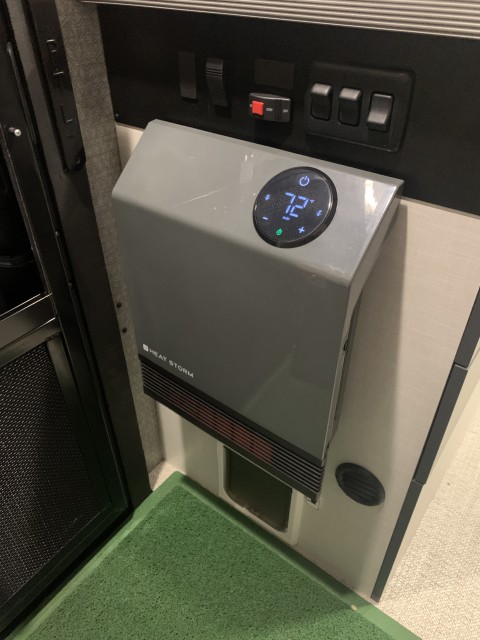
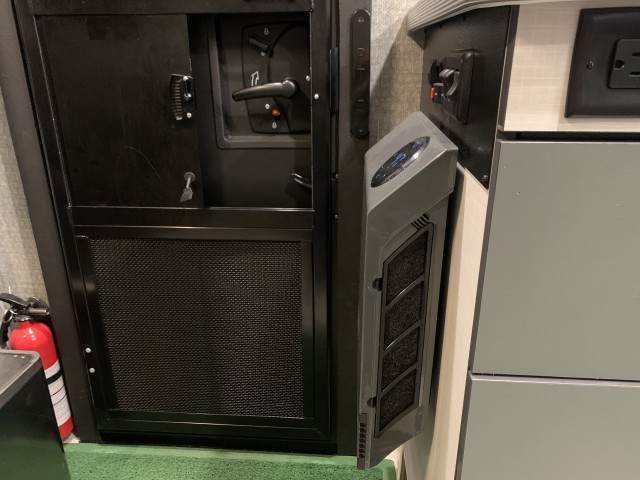
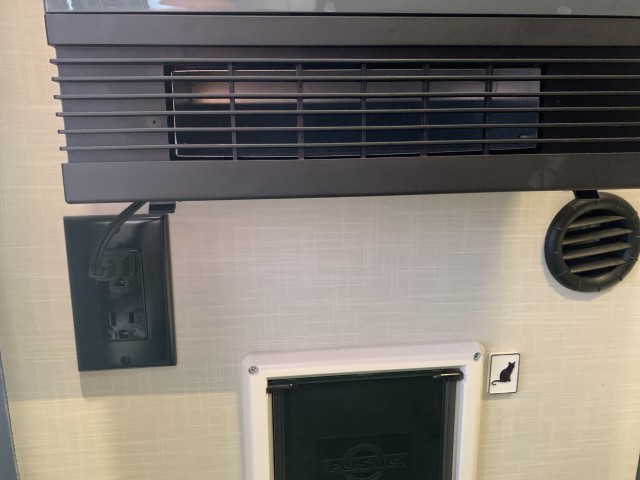


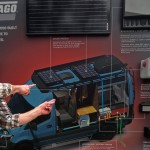
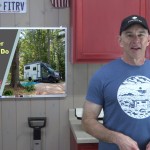
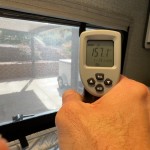





We just purchased the The Heat Storm Infrared Wall Heater WXG and will be installing it this week. I won’t able to install a 30 amp circuit until late January to provide shore power to our 2023 Ekko (“Schrodie”). I was wondering what to expect if I connected Schrodie to 15 amp service just to run the electric heater on low, the Truma VarioHeat with fan only, and charge the batteries until I install the 30 amp feed. Am I off base with this line of thinking?
Jimmy
Salt Lake City
That should work, with a couple caveats.
You will definitely want to make sure you set your shore power input down to 15 amps to ensure you don’t trip your breaker in the home.
And while the heater is on, I wouldn’t count on a very fast battery charge. A few amps at most. Think “maintenance charge” while the heater is running.
But beyond those, I wouldn’t anticipate any issues.
Thank you. I pay homage to your deep wisdom. 🙂
Well, I don’t know about that, lol. But you’re welcome!
Love the idea of using this heater as an over-winter heat source, coupled with the VarioHeat fan running on low. We just installed a 30A line next to our EKKO, so have the electricity to use this setup to help “winterize” the cabin, water bay, and garage above . If its going to be just sitting in the driveway, is there a temperature you would suggest setting the heater on?
One last thought, the Truma Heater has vents directly to the outside, meaning there’s openings in the Heater access door which allow cold air dircetly into the Truma Heater space. Do you have any thoughts how we might better insulate that space from direct access to the exterior winds and cold? And would that help to any degree? I don’t think the Truma Heater space is ducted is it?
Anything just above freezing will work, but your number could be different from mine, depending on where you store it, coverings, sunlight exposure, proximity to house, etc…
I’d recommend getting a few Govee remote temperature sensors, and putting them around the rig in the garage, in cabinets with water lines, etc. Track the overnight temperatures for a few days, gradually lowering the temperature until you find the sweet spot.
James, I am going to have a friend install an outlet for this. Can you provide more details as to what wires you tapped in to and is a fuse necessary? And was this cut through to the galley or outdoor kitchen area?
There is already a circuit with two outlets that you can see on the front of the galley cabinet.
All I did was add a third outlet to this circuit. Super simple.
Hi James. So are you saying that as long as you have an electric heater in the cab and it heats the cab to at least 65 degrees and if you keep the Truma VarioHeat fan running (to duct the heat throughout), that it will keep the water from freezing in cold temps? And, when you are using this heater, do you leave on the Truma VarioHeat or just the fan?
We will ultimately be sharing time between Phoenix and Wisconsin (Temp EXTREMES!) and we hope to use our rig even in Wisconsin winter months to pack up and head to PHX.
I apologize for the dumb questions, but I am not a rocket scientist! (Just a lawyer with no technical knowledge or skills.) You and Steph rock! Thank you!
In theory, yes, that would work. We have camped in the manner you describe in the winter (electric heater on, and VarioHeat on fan-only) and nothing froze. Obviously, I can’t guarantee that this will work in all winter conditions, or at exactly 65 degrees, at all fan settings, with any combination of Truma vents open, etc. But you seem to grasp the theory.
If you have doubts, or are worried, you can always fall back to using just the VarioHeat. That will certainly pump warm air everywhere it needs to go. Electric heat is just another option.
Hi James, We’re considering using a portable heater (the Vornado, 750w-1,500w) as an augment to the Vario for winter camping. I don’t want to get into the weeds here as to exactly when we plan to use it, but suffice it to say it will only be used when we have the entire water system drained and nothing of too much value in the garage that needs heating. We really just want to cut down on expensive, non-renewable propane use. My question is this: the Vornado has a recommendation to not use their electric heater if you’re converting battery power to AC. Have you heard of this? Did you run into this problem? What’s the issue here? Thanks again for all your posts! They’re terrific.
If you search around, you’ll find someone actually called Vornado about this. They were told that inverters and generators created a fire hazard with their heaters. (Overheating, apparently.)
For obvious reasons, I can’t tell you ignore their warning. You’ll need to form your own opinion as to whether the warning is based on science (modified sine wave… underpowered inverters… wiring gauges…) or based out of their legal department.
But since there are literally HUNDREDS OF OTHER HEATERS AVAILABLE, in your shoes, I would be investigating other choices.
Hi James,
New Ekko owner here, nice mod.. been looking at same.. did you run a new outlet on a new breaker, or piggy back off the another circuit? thx..
really enjoy your series.. picked my 2 batt/no gen ekko up last monday.
Dave.
I know I didn’t go all the way back to the breaker panel for this one. I picked up something that was already in the galley area.
James and Stef: This is a really good idea for a portable heater. Thank you for doing this video. I love it because I am a very light sleeper (everything wakes me up) and I would think it would be quieter than the traditional super noisy heaters in RV’s. I see that the EKKO has a Truma Varioheat heater. Is that just as noisy as most RV heaters?
Thanks for all your great videos and ideas!
-Shane-
The VarioHeat is actually much quieter than other RV heaters – even this electric one – most of the time.
If the VarioHeat kicks in to what I call “Turbo” mode, then it’s comparable to other heaters. But that only happens in certain situations. Most of the time, the Truma heater is virtually silent.
Very good. Thank you!
Hello from Sweden. Hello to you all 3 James Stefanie and Mel. Had hoped to see a You tube upload that showed when you are out and winter camping with your RV NO.1. But got to see that you have acquired an electric heater, to be used during the winter season. We have a bit of a hard time understanding why there is no option for Winnebago Ekko to have it equipped with the ALDE Heating system [https://www.alde.se/]. In our opinion, the best heating system for winter camping. In our RV from the 1983 model, the oldest KABE RV.n that rolls on the road in Sweden today, we can easily get down to about F +5 = C – 15 F -22 = C -30 degrees. We have waterborne heat. It is powered by propane gas or 1st immersion heater of 1000 watts and 2000 watts. It is also possible to run these systems together if you want, then you have type 7000 watts together. The 2022 KABE manages down to about F -58 = C -50 degrees. Regards Jan Maj and LOKE.
The Alde system is used in some RVs over here – typically larger ones – but not very many.
I don’t know why it hasn’t caught on as much. Perhaps price?
In reading the details, it says if your van tips over, the heater will shut off. Comforting.
LOL!!
Curious why to didn’t go with something _in_ the wall like this:
https://www.lowes.com/pd/Cadet-Com-Pak-1000-120-Volt-Heater-fan-Heater-9-in-L-x-12-in-H-Grille/5001729573
This one doesn’t have a thermostat so you would need a Line Volt Tstat
Good question. Besides not having the thermostat, these and similar units are mad to fit inside the typical wall cavity created by 2×4 framing, with flame retardant gypsum wallboard making the opening.
None of the walls in the RV are built that way. That’s not to say it couldn’t be done, but you’d need to a) give up space inside a cabinet or somewhere to make up for the missing framing, and b) ensure that the mounting surface was safe and met all appropriate safety standards. Sheetrock does. Typical RV construction I’m not so sure about.
That makes sense. And anyway I bet Mel wouldn’t want to share!
Anyway, we have the same problem but worse in the winter (+5F the other night) and, when there is liquid water in the van, I have been running a cheap space heater which is always always in the way. We have the same “wall” as you available (near the door) and so that is a possible add-on for us. In our case, though, I would probably remove it in the non-winter months, but that seems easy.
Yep. It will lift right off when we want to remove it.